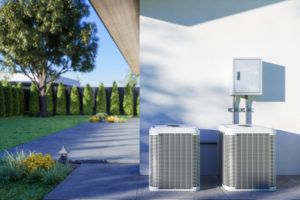 As energy costs skyrocket, it’s important to look for more efficient appliances, starting with your HVAC system. Your furnace’s efficiency is measured via the Annual Fuel Utilization Efficiency rating. Here’s how to use it to lower your energy usage.
As energy costs skyrocket, it’s important to look for more efficient appliances, starting with your HVAC system. Your furnace’s efficiency is measured via the Annual Fuel Utilization Efficiency rating. Here’s how to use it to lower your energy usage.
Your Fuel Utilization
The AFUE rating measures the percentage of fuel your furnace gives off as heat, on average, over the course of a year. For instance, a gas furnace with a rating of 85 utilizes 85% of the natural gas it burns. The remaining 15% is given off as exhaust.
The less waste your furnace burns as fuel, the less energy it needs to heat your home. Furnaces in the United States must have a minimum rating of 80. The best furnaces are rated above 90%, and the most efficient units have ratings north of 98% — i.e., less than 2% waste per year.
To get a better idea of how efficient a furnace is before you buy it, look at the yellow Energy Guide label. Not only does it show you the unit’s rating, it puts it on a scale to see how it ranks against models of similar size and capabilities. If it’s ranked on the low end, you know you can find something more efficient for a comparable cost. Also look for the blue Energy Star label, indicating that the system will save money and energy over similar models.
Heating and Cooling
The AFUE only applies to your furnace. ACs use the Seasonal Energy Efficiency Ratio. SEER ratings express how much cooling your unit produces over the course of a given season for the amount of energy it uses. In Arizona, the minimum required SEER rating for an AC is 14, but systems can go as high as 25.
With regard to heating and cooling, it’s important to find the most efficient system for your home. This will help you reduce your energy bills, saving money and minimizing your carbon footprint.
For help finding the furnace with the highest AFUE, contact us at Hansberger Refrigeration and Electric Company. We provide Yuma with quality home-comfort solutions.